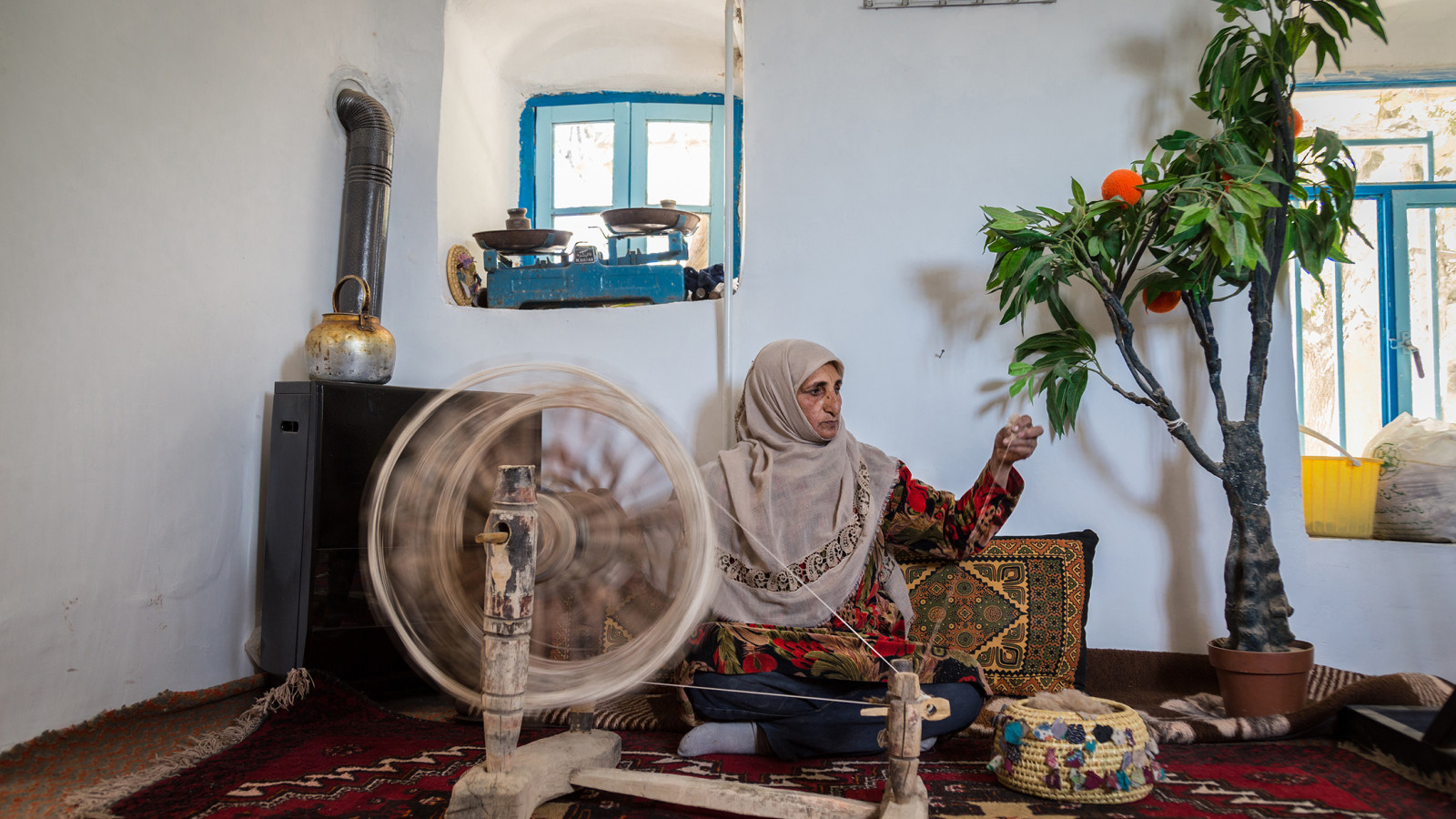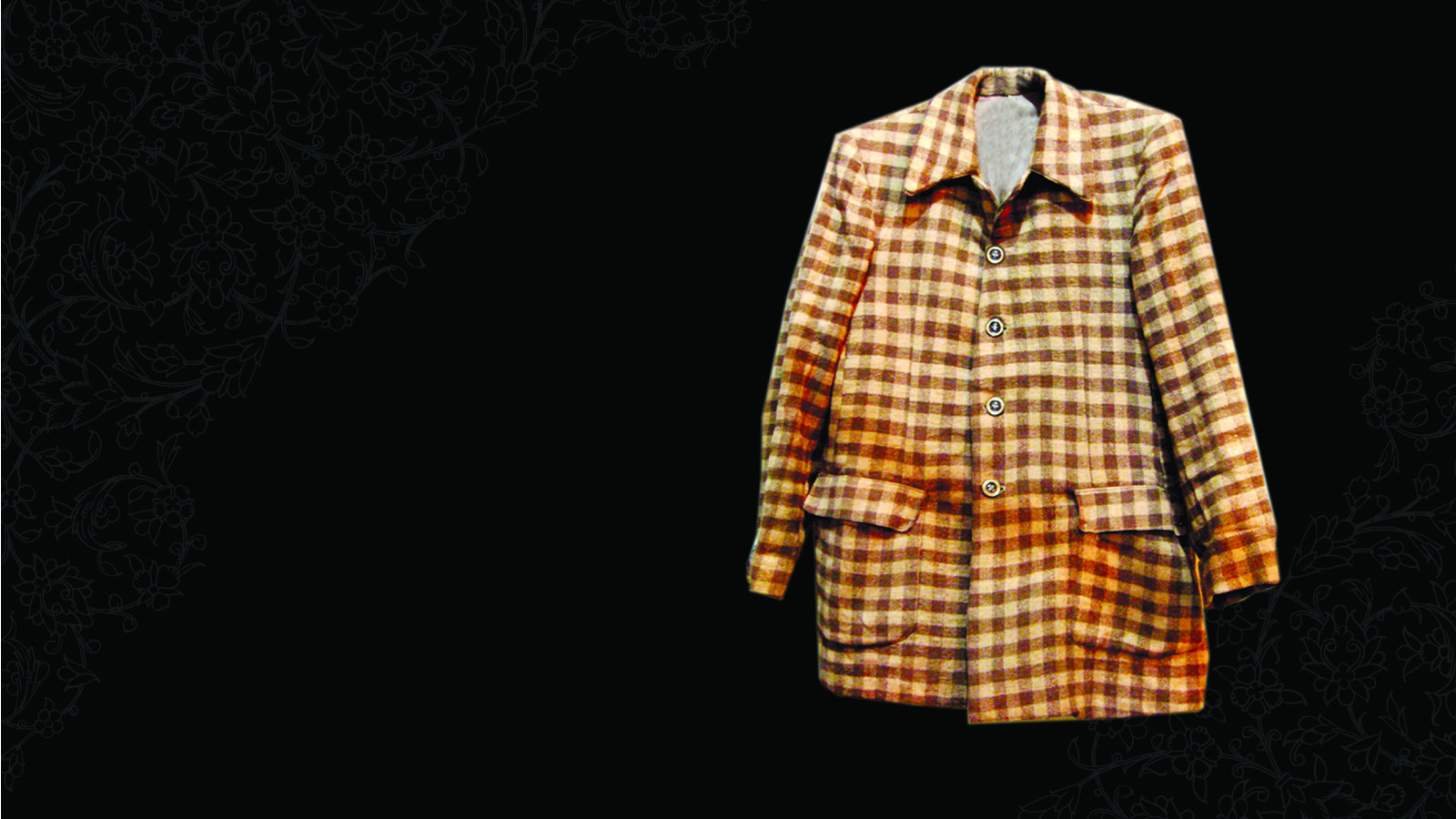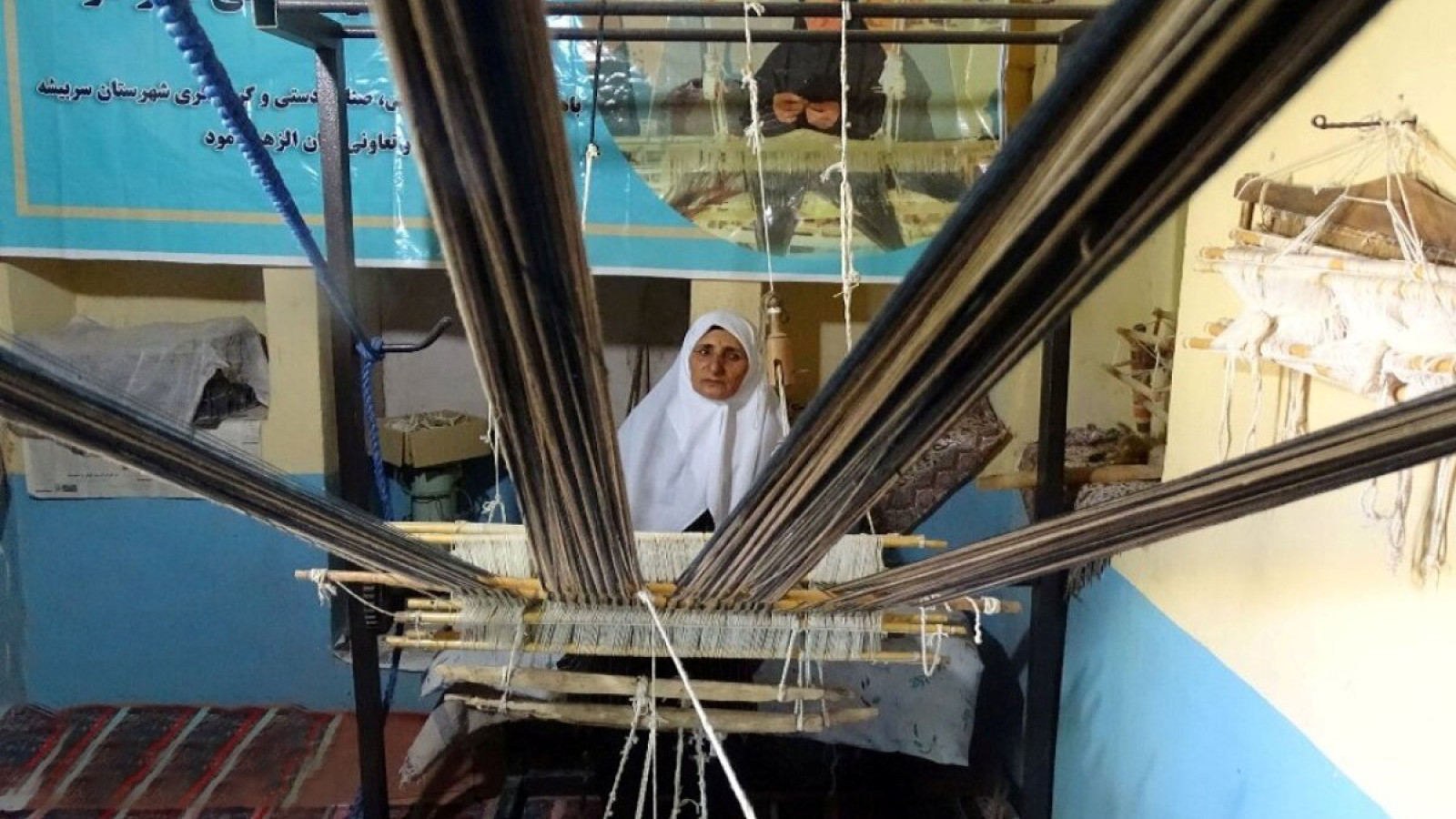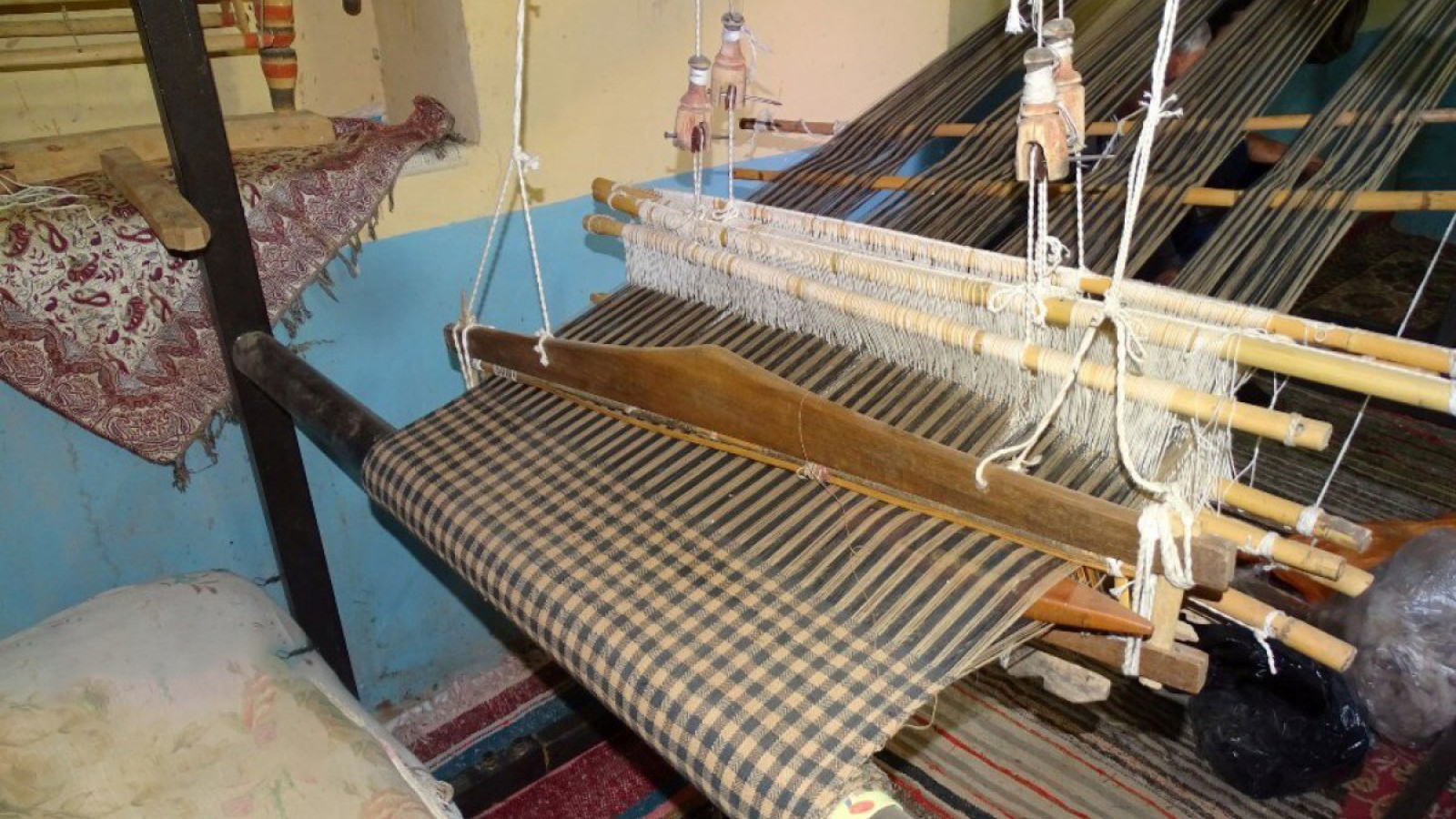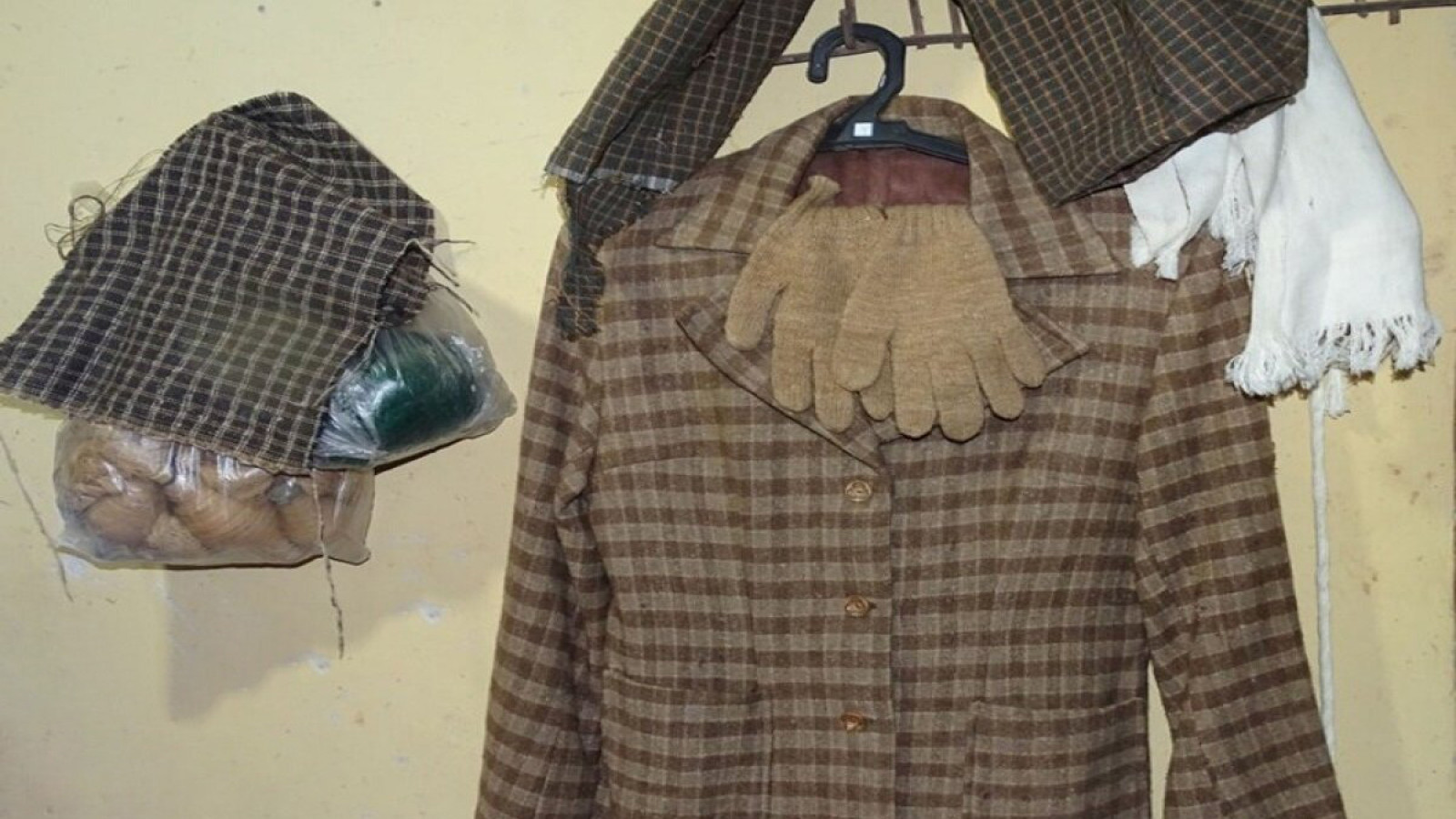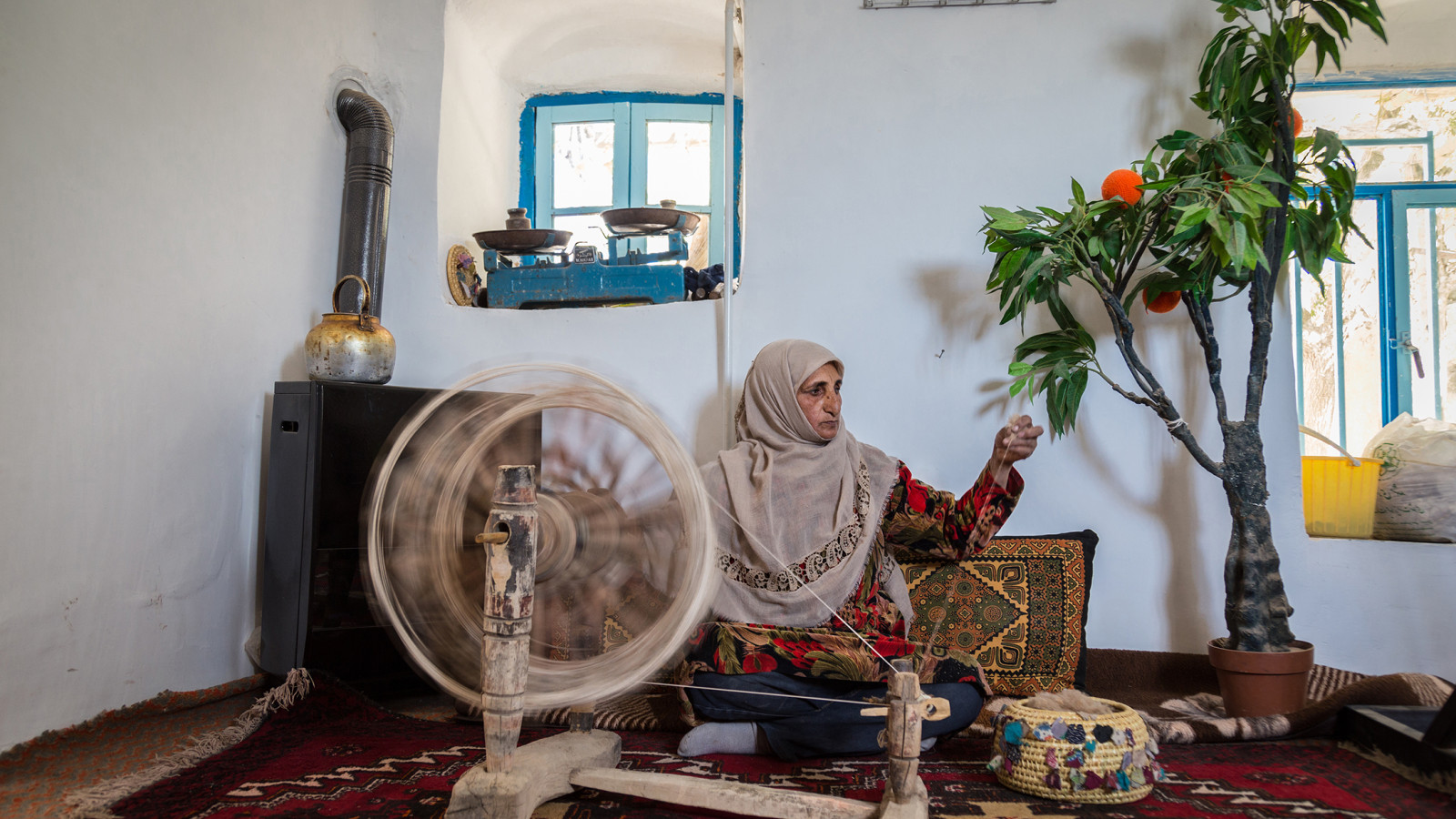Barak Weaving (South Khorasan Province)
Also known as Kurki Weaving and Kurgin Weaving, Barak Weaving is the process of producing a handmade thick fabric in the South Khorasan Province. The history of this craft dates back to the Seljuk period. It is woven using the camel wool or underhair of goat (Kork, i.e., mohair) with simple or checkered patterns; the name of this fabric is exactly driven from its color. Barak is called Barrakan in Arabian language and it is usually self-colored seen in natural colors like brown, black, white, milk white, as well as gray. The first stage of weaving Barak is pouring lime over the sheep in order for the wool and fine wool to be easily separated. Then the raw wool is sorted by color, combed, straightened and after another combing, start to spin using the drop spindle in order to turn them into yarn. After starching, webbing, sizing, and sticking threads together, the next stages are warping and pirn feeding, and following them the process of weaving will start. Woven with the traditional two-Verdi textile machine, Barak product is beaten and agitated with yolk to be fluffier like the texture of felt. It makes the scale-like head of fabric softer to not bother the body. Barak is highly fine, soft and durable and extremely popular because of its warmness, lightness and easy maintenance. Barak cloths are used for coats, suits, hats, gowns, leggings, shawls and sometimes for rugs. It seems that in the past it was mainly used to make hats and gowns (qabā) for dervishes. But reaching higher quality and the advent of a specific form of Barak named Shamshirak led the upper classes to become interested in this fabric and using it for sewing cloths as well. Barak has been referred, by travelers to Iran in their itineraries, as one of the handwoven products of the region calling it Iran serge fabric. Barak weaving is now popular in Sarbisheh city, specially in Mud, Nehbandan and Khousf towns. In addition, the famous Barak of the South Khorasan Province is woven by Barbary Hezar tribe in Bošrūya, a town located about 107 km southwest of Šahr-e Ferdows.
